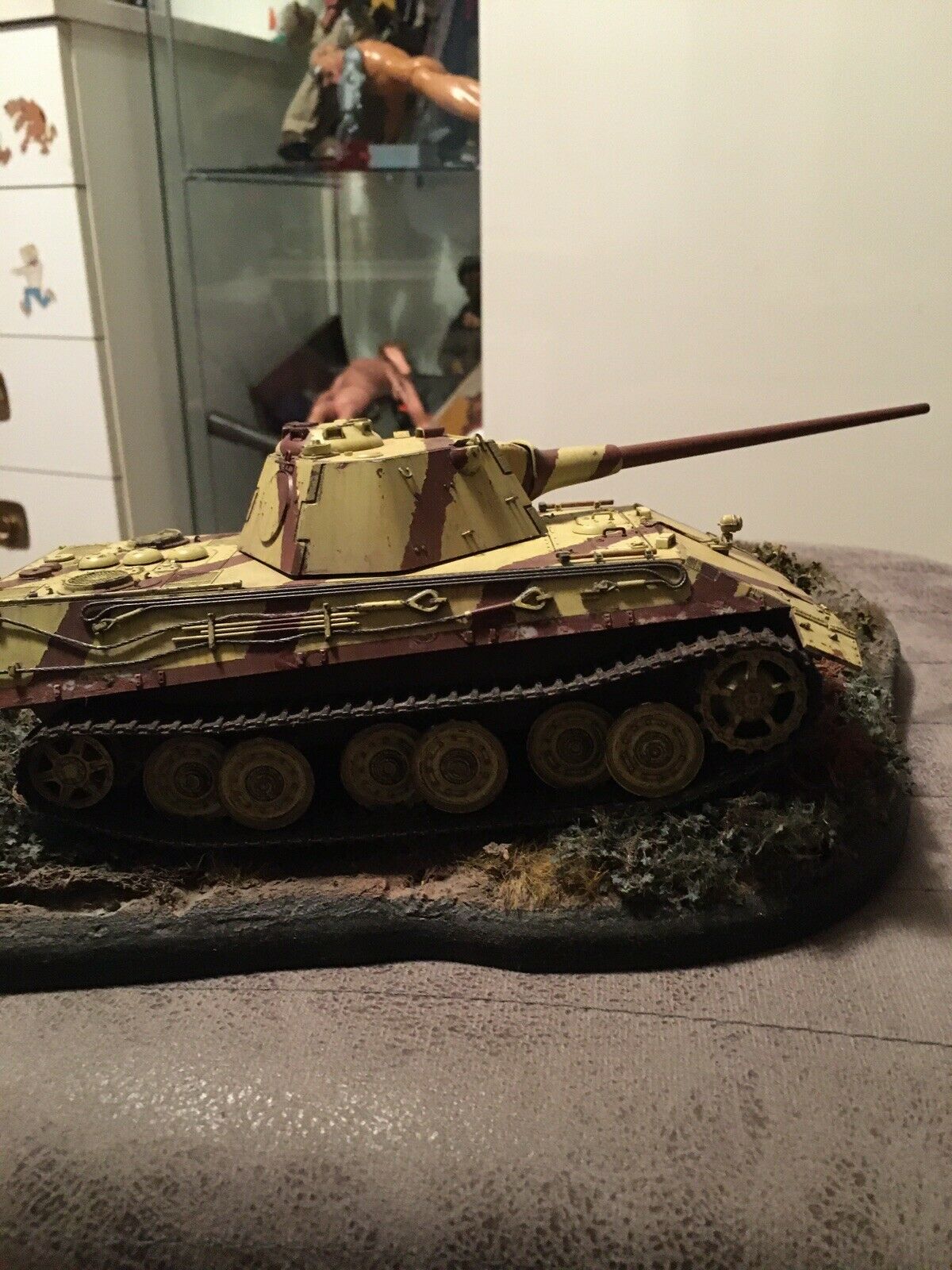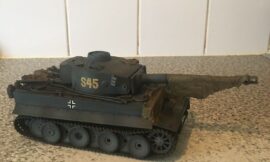The E-50 Standardpanzer was a German tank project developed during World War II as part of the Entwicklung (E) series, which aimed to standardize and simplify tank production for greater efficiency and effectiveness. The E-50 was intended to replace the Panzer IV and Panther tanks, streamlining production and logistics by providing a versatile, standardized medium tank platform.
Development and Design
The E-50 project was initiated in the later stages of World War II, around 1944, as Germany sought to rationalize its increasingly complex and resource-intensive tank production. The E-series, including the E-50, E-75, and E-100, was conceived to cover various weight classes and operational roles while sharing common components to simplify maintenance and production.
The E-50 was designed to be a medium tank with a weight of approximately 50 metric tons, falling between the lighter Panther and the heavier Tiger tanks. The design emphasized modularity, ease of production, and battlefield performance. By using standardized components across different tank models, the E-series aimed to reduce the logistical burden and improve the efficiency of the German armored forces.
Armament and Capabilities
The primary armament of the E-50 was intended to be the 8.8 cm KwK 43 L/71, a powerful and proven anti-tank gun also used on the Tiger II. This gun was capable of penetrating the armor of most Allied tanks at long ranges, providing the E-50 with significant firepower. The 8.8 cm KwK 43 L/71 was renowned for its accuracy and high muzzle velocity, making it one of the most formidable tank guns of the era.
Secondary armament would have included one or more 7.92 mm MG 34 or MG 42 machine guns for close-in defense against infantry and light vehicles.
Armor and Protection
The E-50 was designed with sloped armor similar to that of the Panther, which provided effective protection against both kinetic and shaped-charge munitions. The hull front was expected to have up to 150 mm of armor, while the turret front could be as thick as 185 mm. This level of protection, combined with the sloped design, would have given the E-50 excellent defensive capabilities against most Allied anti-tank weapons.
Mobility and Engineering
The E-50 was intended to be powered by a Maybach HL 234 engine, producing up to 900 horsepower. This powerful engine, coupled with a torsion bar suspension system, would have provided the tank with a good balance of speed, mobility, and cross-country performance. The top speed was projected to be around 60 km/h (37 mph) on roads, making it one of the faster medium tanks of its time.
The tank’s design included a simplified transmission and steering mechanism to enhance reliability and ease of maintenance. The overlapping road wheels, a hallmark of German tank design, were intended to provide a smoother ride and better weight distribution.
Operational History and Legacy
The E-50 never progressed beyond the design and prototype stages due to the collapse of Nazi Germany in 1945. No production models were completed before the war’s end, and the project’s technical specifications remained largely theoretical.
Despite its lack of operational deployment, the E-50’s design philosophy influenced post-war tank development. The emphasis on standardization, modularity, and efficiency resonated with post-war military vehicle production approaches. The lessons learned from the E-50 and other late-war German tank projects were studied by both Western and Soviet engineers, contributing to the development of subsequent generations of main battle tanks.
Conclusion
The E-50 Standardpanzer represents an ambitious attempt by Nazi Germany to streamline and modernize its tank production during the final years of World War II. While the project was never realized, the E-50’s design aimed to combine firepower, protection, and mobility in a standardized, efficient package. The concepts and principles behind the E-50’s development continue to be relevant in modern armored vehicle design, highlighting the enduring legacy of this unfulfilled wartime project.








